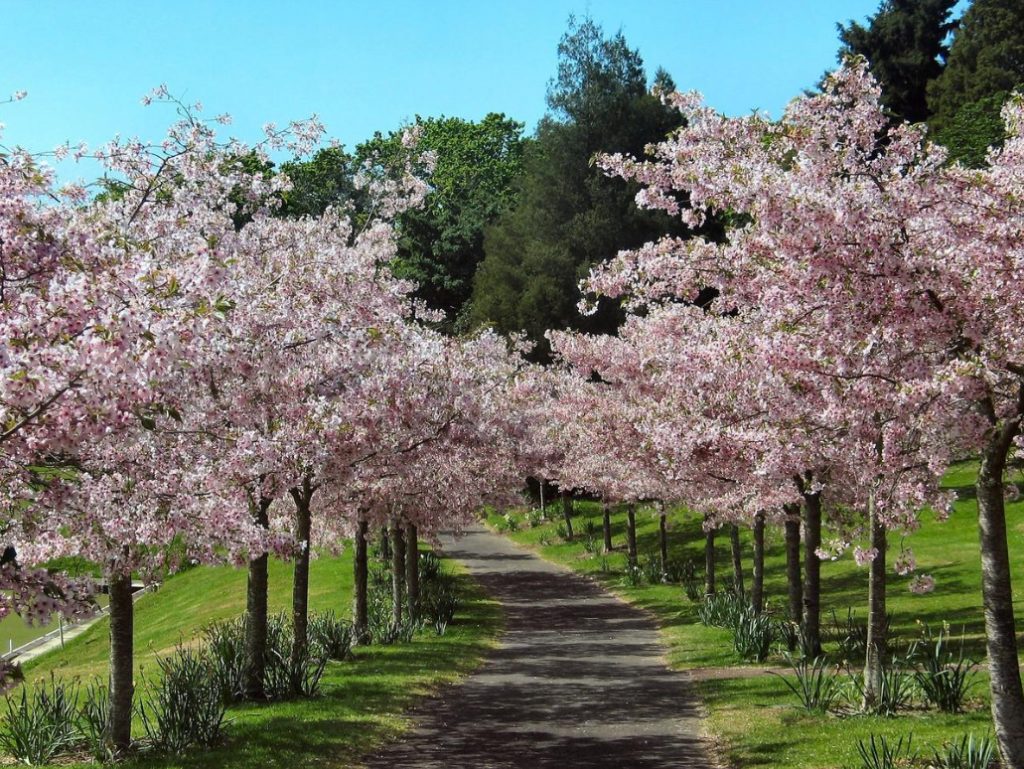The arrangement of gardens has a very long history, and the gardens themselves have a very diverse purpose, and not only utilitarian. Once they were arranged for reflection, poetic dreams, scientific studies; in the Middle ages, the monastery gardens were intended for prayers and pious conversations (but they grew rare medicinal, fragrant and food plants). Later, the gardens of wealthy people were used for receiving guests, celebrations, and official receptions at the state level. In the era of Romanticism there were gardens for intimate meetings and melancholy walks…
At the same time, there has always been an idea that a true garden should bring pleasure to all human senses: not only vision, but also taste (hence the need for fruit and vegetable plants in the garden), hearing (taking care of birds, noisy streams and waterfalls, and wind music), smell (the presence of fragrant herbs, flowers, trees and shrubs) , etc.
The organizers of gardens have always sought to give a person a reason for deep philosophical reflections, moods and poetic dreams. The garden reflected the world in its kind and ideal essence. “As a gardener, so is the garden” – so they said at the beginning of the 18th century.
Francis Bacon (1561-1626), an English scientist, philosopher and… gardener in his essay “On gardens” (1625) formulated the most General requirements for them that were imposed in all the observable for the researcher of garden art of the era. He was convinced that the garden should be a Paradise, an Eden:”…this is the purest of all human pleasures. It is most refreshing to the spirit of man; without it, buildings and palaces are but rude creations of his hands; and it will be seen that in the course of time, as civilization and taste for the elegant develop, men will learn to build beautifully rather than to plant beautiful gardens; it turns out that the cultivation of gardens is a more subtle occupation and requires more perfection”. For the design of the Royal garden, Francis Bacon proposed a composition of plants that would bloom every month of the year in due time.
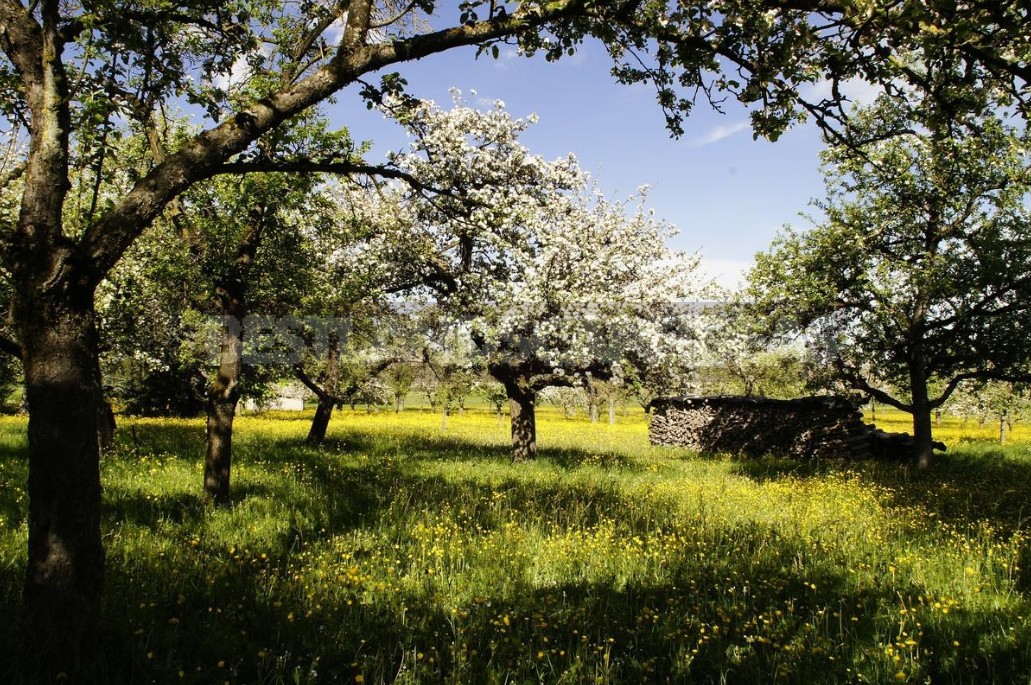
A modern garden: the pleasant with the useful
Modern garden plots, which are both a garden and a vegetable garden, are also impossible to imagine without floral decoration. Given their small size, it can be very difficult to combine useful, necessary (trees, shrubs, beds) and pleasant (beautiful variety of flowers). Still, it is possible to grow a full set of fruit trees, berry bushes, vegetable crops, and hundreds of species of ornamental plants on small plots.
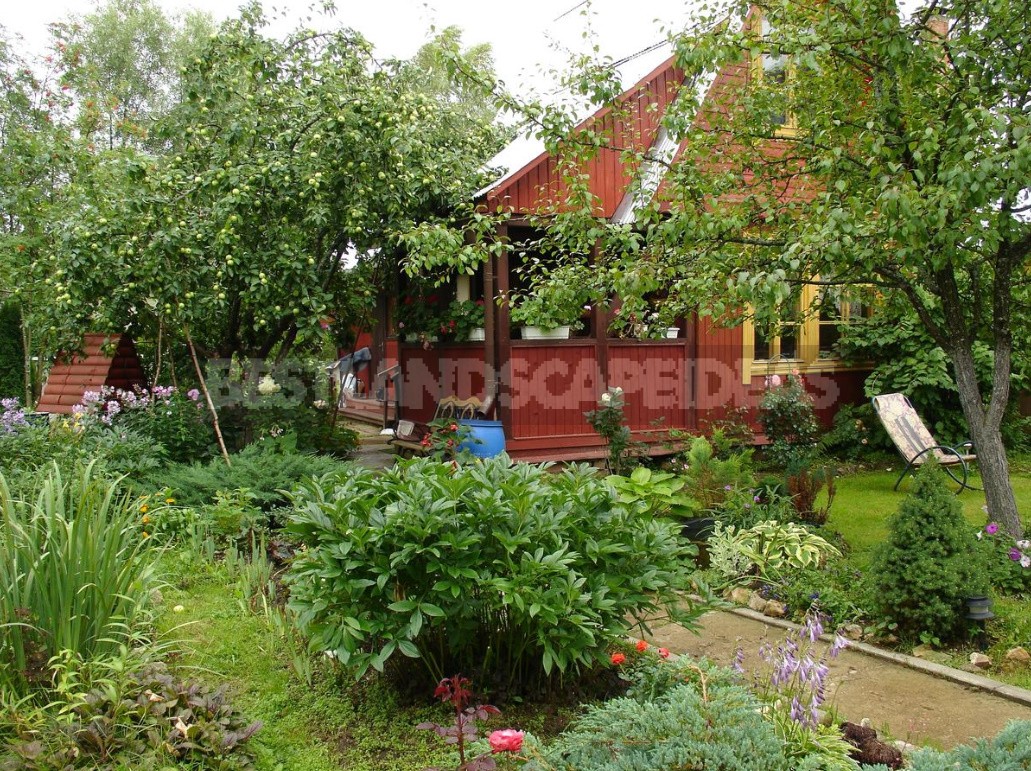
First of all, the gardener must understand what relationships are formed between plants of different species in his garden: which of them competes for soil nutrients, moisture and light, and who partners with each other.
The roots of young fruit trees in the first 3-4 years of life are located close to the soil surface, so the tree trunks are kept loose and free from any plants. If Apple trees grow on low-growth rootstocks, then in subsequent years, the tree trunks with a diameter of about a meter remain unoccupied, and in the rest of the area under the tree crown, it is quite possible to place annual flowers, alternating them by families and years.
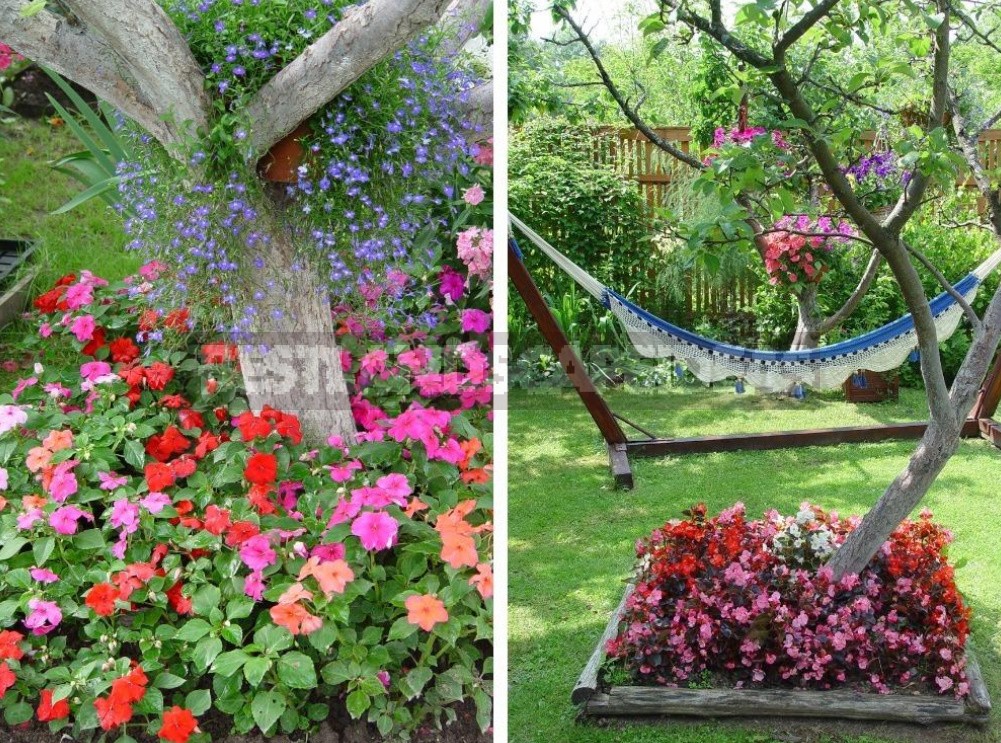
In addition, under the crowns of Apple trees, pears, plums, and cherries, groundcover and low perennials with a superficial root system can grow comfortably. If there is sufficient light in this place, you can plant Sedum-Sedum album, Sedum acre, Sedum lydium, Sedum spurium, Sedum reflexum, Sedum reflexum, and others.
Without damage to fruit trees, small-leaved flowers grow under the crown: Muscari, Hyacinthus, Scilla, Chionodoxa, Crocus, Fritillaria meleagris, Ornithogalum, as well as Narcissus and Tulipa. Good partners for bulbs will be Viola tricolor, which decorates their yellowing leaves; biennial Pyrethrum with flowers resembling small-flowered Chrysanthemum; a variety of summer flowers at the forefront.
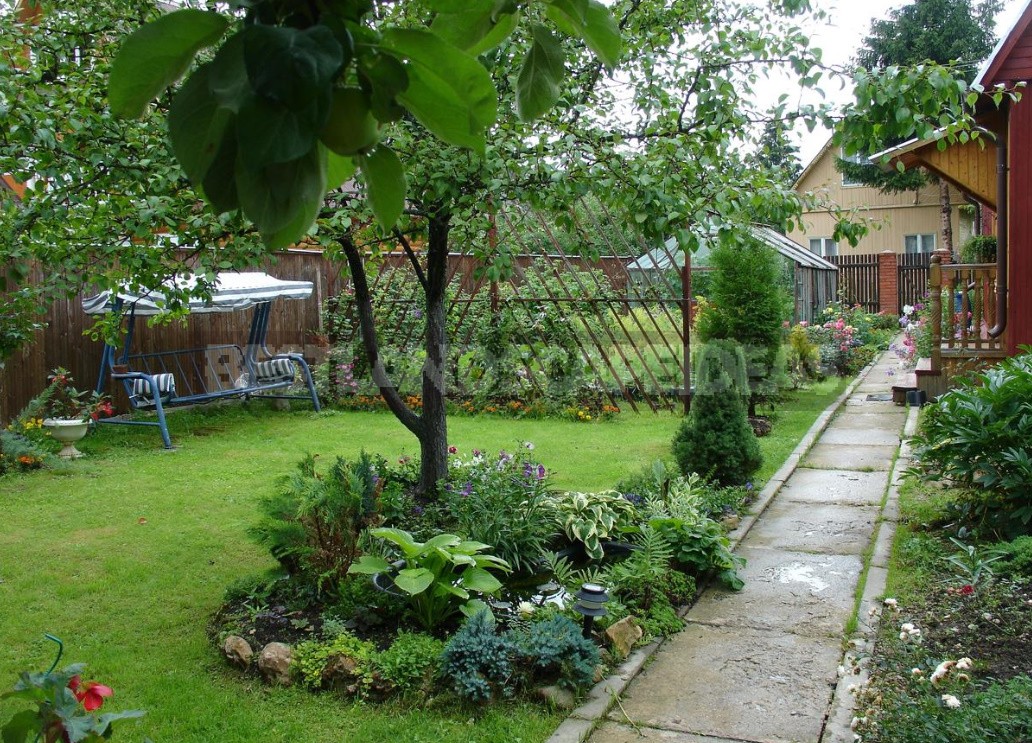
When the tree crowns become more dense, the illumination of the tree trunks decreases, and the choice of plants changes. There are many types of perennials for which penumbra and even shady places are the most suitable by their nature. Here are the most common ones:
- Aquilegia,
- Bergenia,
- Vinca,
- Brunnera,
- Lysimachia,
- Heuchera,
- Diclytra,
- Iris (Iris pseudacorus),
- Caltha palustris,
- Saxifraga (Saxifraga cuneifolia and Saxifraga urban),
- Convallaria majalis,
- Mentha,
- Melissa,
- Narcissus poeticus,
- Oxalis,
- Hosta green leaf forms,
- Corydalis,
- Primula
- and others…
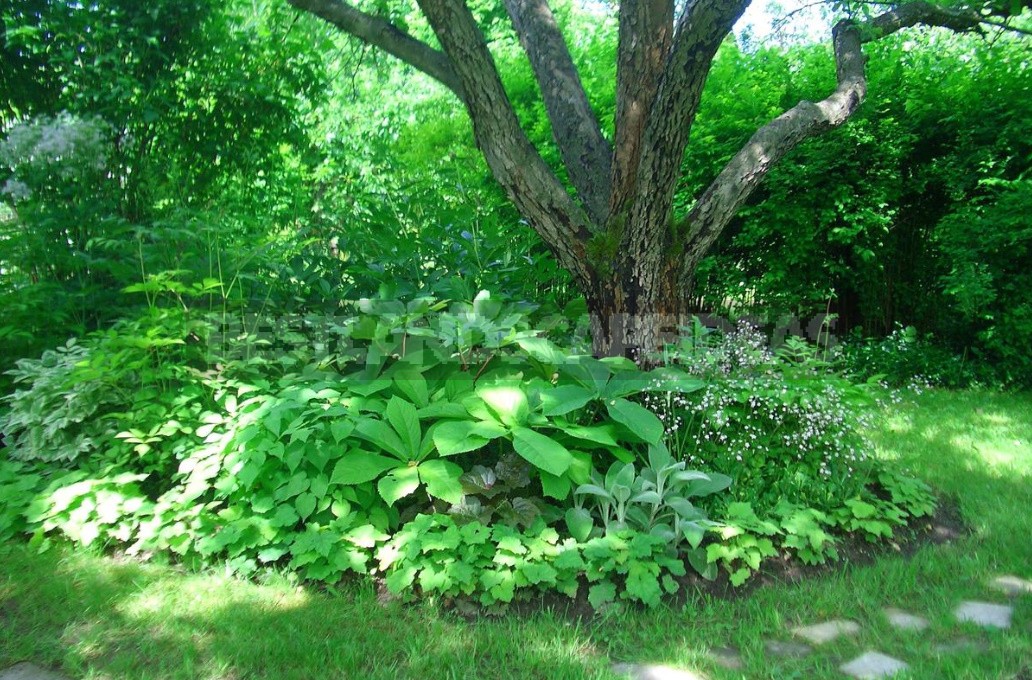
If Apple trees in the garden are grafted on tall rootstocks (this is almost all old trees), then their roots go deep into the soil, while the roots of perennials are located in less deep layers. This circumstance allows you to use the area of the tree trunks for the device of a wide variety of flower beds with a large set of species and varieties. At the same time, you can create mini–gardens of continuous flowering under each of the trees.
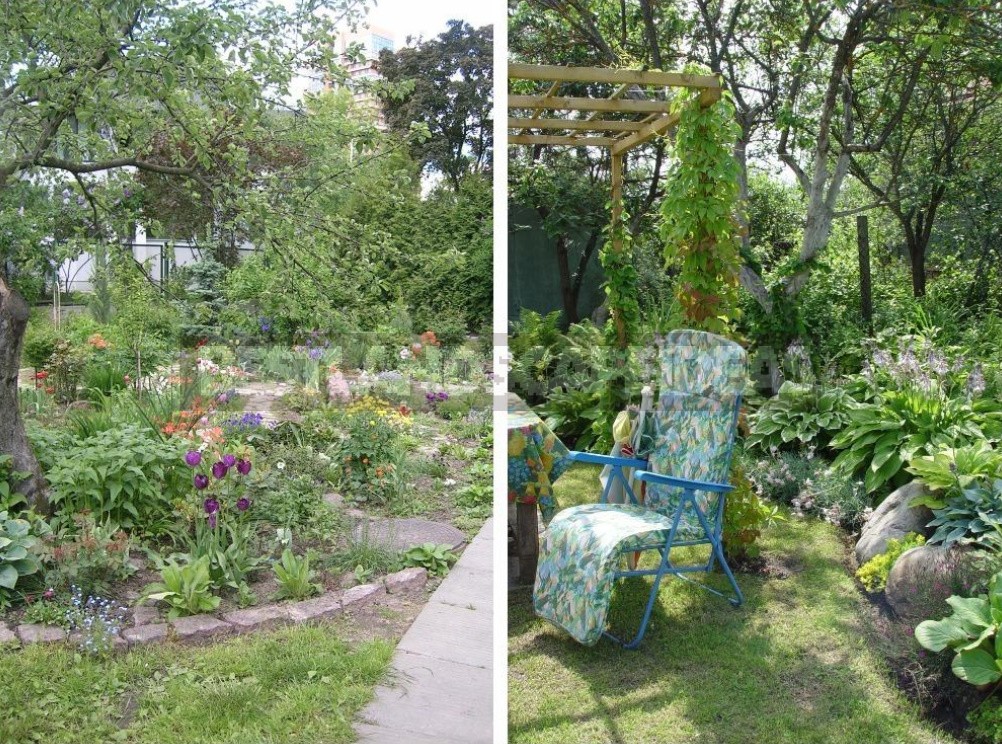
It is interesting to see in practice that many species of perennials are very plastic and feel great in an unusual habitat. Often light-loving species grow quite successfully in the shade and penumbra; at the same time, they significantly increase their usual height, but with good nutrition, this does not prevent them from still blooming abundantly.
There can be an infinite number of options for placing plants, taking into account their species and varietal diversity. Perennials in this case are preferred — as the most durable, hardy, not requiring much care, very decorative flower plants.
Arrangement of flower beds in tree trunks
One of the greatest advantages of flower beds in tree trunks from a practical point of view is their ability to suppress the growth of weeds. But the most important thing, in my opinion, is the creation of a carpet of various plants that blooms continuously from early spring to snow.
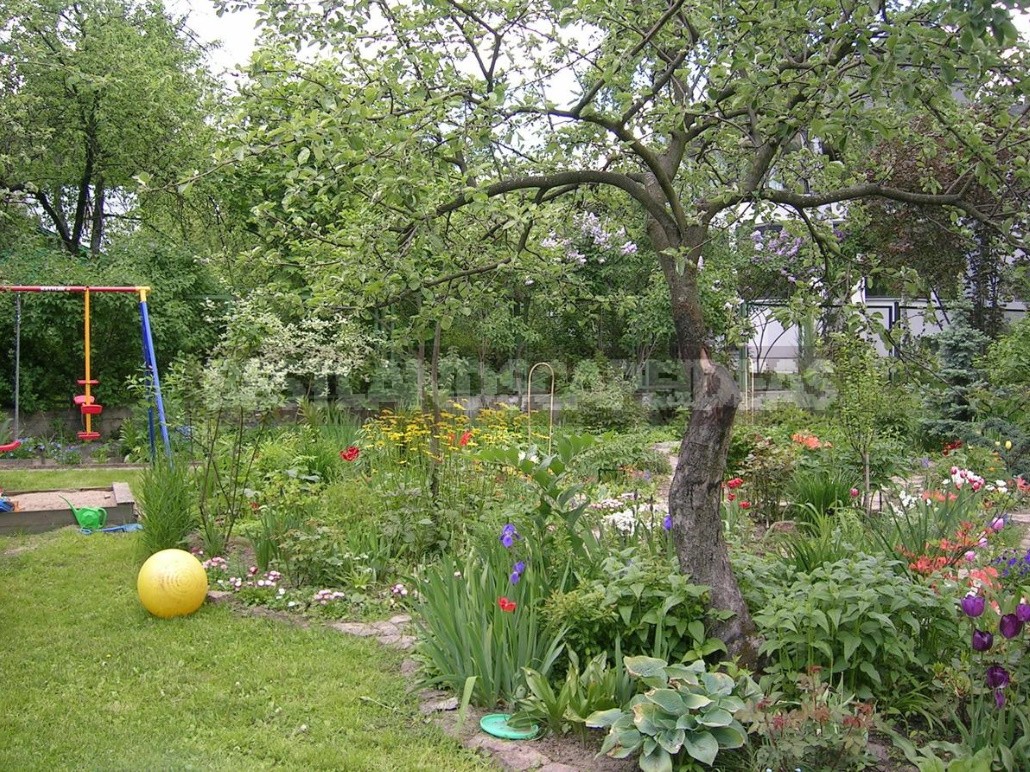
At the same fruit trees and berry bushes produce fruit regularly, bringing their colors in everyday life garden: awakening from the soft greens of buds, flowering plum and cherry trees, Apple trees, reminiscent of white and purple flowers with lush tassels dark purple lilac, to fruiting — scarlet color with strawberry, raspberry rows, white, red, black currants and blackberries. And then the first liquid apples will fall under the Paeonia bushes and on The doronicum turf…
And so in our garden continues for many years. Of course, this was not the case at first. There was a land pitted with trenches and craters, which was cherished by the hands of our parents, very young people at that time, who knew almost nothing about garden wisdom, but were already laying their first garden.
From the first steps, we children helped to take care of the garden as much as we could, and everyone rejoiced at every small victory in understanding the craft of the gardener. Every spring, the life of plants was revived after the winter torpor, and we, too, were revived along with the flowers and trees. So the first generation of three children grew up, and my sister and I chose the profession of flower growers. Then my daughters and nephews grew up in the garden and absorbed its beauty and eternal novelty. My little grandson took his first steps in this garden. He stopped at each flower and berry branch, admiring and touching them with great pleasure and interest.
The garden continues its life and decorates ours. The most touching sight is children, parents, grandmothers and grandchildren smiling happily among the flowers. It turned out so well that we always celebrate my mother’s birthday in the blooming and fruiting August garden, where the whole family gathers.
